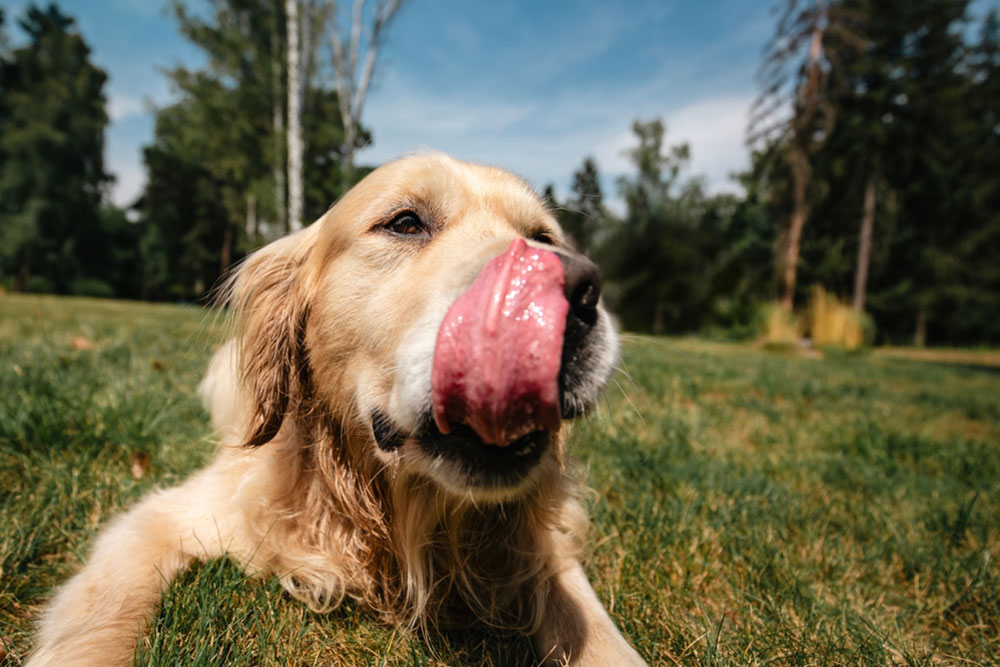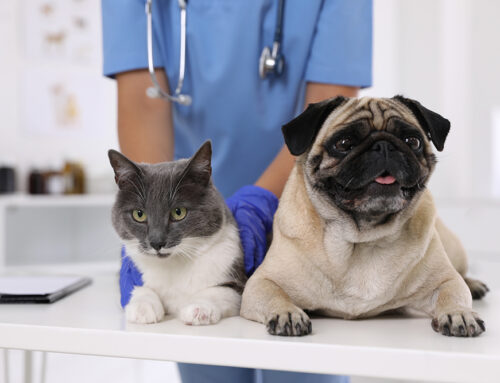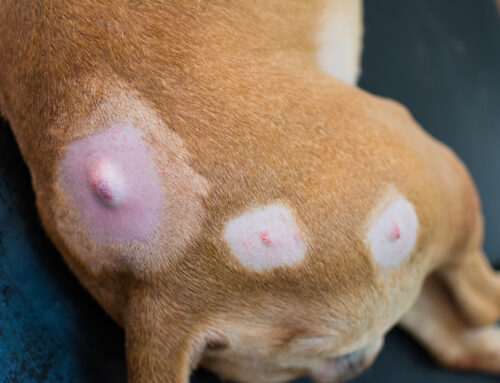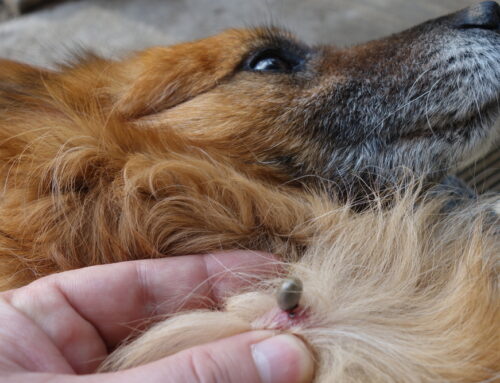At Star of Texas Veterinary Hospital, we hear this question from pet owners regularly: “Why does my pet lick so much?” While licking is a normal behavior in pets, excessive licking can sometimes indicate an underlying health or behavioral issue. Understanding the reasons behind this behavior is crucial to ensuring your pet’s overall well-being. As part of our commitment to your pet’s health, we aim to provide insight into what might be causing your pet’s licking and how to address it effectively.
What’s Behind the Licking? Decoding Your Pet’s Behavior
Licking is one of the most common ways pets interact with their environment, groom themselves, and even communicate. It can signify affection, such as when your dog licks your face, or be a part of their natural grooming routine. Pets also lick objects to explore, as their tongues are rich in sensory receptors.
When does licking cross the line into a problem?
Excessive licking is persistent, compulsive, and can interfere with your pet’s daily life. If your pet licks a specific area repeatedly, starts licking non-stop without apparent reason, or seems unable to stop, it’s time to dig deeper. This behavior may indicate an underlying issue that requires attention.
To learn more about why dogs seem to lick everything, check out this guide from the ASPCA.
Why Is My Pet Licking So Much?
Excessive licking can have a variety of causes, ranging from physical discomfort to emotional stress. Identifying the root cause is the first step toward finding a solution.
Medical Causes
- Allergies
Pets can develop allergies to food, pollen, dust mites, or flea bites. Allergies often cause itchy skin, leading to constant licking as your pet tries to soothe the irritation.
Tip: Check for seasonal patterns or environmental changes that could trigger allergic reactions. - Skin Infections
Bacterial or fungal infections often create discomfort. Licking may temporarily relieve the itch but can exacerbate the infection, creating a vicious cycle.
Example: Hot spots, or moist dermatitis, are often caused by repetitive licking, leading to secondary bacterial infections. - Pain or Injury
Pets may lick an area to self-soothe if they are experiencing pain. This could be due to joint pain (like arthritis), injuries, or foreign objects such as splinters lodged in their skin. - Parasites
Fleas, ticks, or mites are common culprits behind excessive licking. They cause skin irritation and can lead to severe itching or inflammation.
Behavioral and Psychological Causes
- Anxiety and Stress
Pets often use licking as a coping mechanism when they feel anxious or stressed. Situations like moving to a new home, the arrival of a new family member, or loud noises (e.g., thunderstorms) can trigger stress-related licking.
Did You Know? Separation anxiety is one of the leading behavioral causes of excessive licking in dogs. - Boredom
A lack of mental stimulation or exercise can lead pets to engage in repetitive behaviors like licking. - Compulsive Disorders
In some cases, excessive licking can be a sign of a behavioral disorder. Like obsessive-compulsive disorders in humans, this requires a combination of behavioral and medical intervention.
Recognizing the Warning Signs
Excessive licking often has visible consequences on your pet’s body and behavior. Knowing what to look for can help you address the issue before it worsens.
Physical Signs:
- Red, inflamed, or raw skin.
- Bald spots or thinning fur in specific areas.
- Presence of sores, scabs, or wet patches on the skin.
Behavioral Signs:
- Increased restlessness or irritability.
- Licking that interrupts daily activities like eating, playing, or sleeping.
- Withdrawal from interaction or sudden aggression.
When should you seek veterinary care? If you notice any of the above signs, it’s time to consult your veterinarian. Early intervention can prevent further complications and ensure your pet’s comfort.
Consequences of Untreated Licking
Ignoring excessive licking can lead to significant health and behavioral issues. Over time, it may result in:
- Hot Spots
These are inflamed, moist areas of skin caused by repeated licking and can quickly become infected without treatment. - Skin Damage and Hair Loss
Persistent licking often leads to bald spots, open wounds, or scarring. Once the skin barrier is broken, infections are more likely. - Behavioral Deterioration
Pain or anxiety causing excessive licking can lead to secondary behavioral issues, such as aggression or extreme withdrawal.
Diagnosing the Cause of Licking
At Star of Texas Veterinary Hospital, our diagnostic approach is thorough and tailored to each pet. During your visit, we may perform:
- A Comprehensive Physical Exam: To look for visible signs of irritation or injury.
- Allergy Testing: This can help identify triggers, whether environmental, seasonal, or dietary.
- Skin Tests: Cultures or scrapes can identify infections or parasites.
- Behavioral Assessment: Observing your pet’s habits helps identify stress or anxiety-related causes.
How We Treat Excessive Licking
The right treatment depends on the underlying cause, which we identify through diagnostics. Common treatments include:
- Medications:
- Antibiotics for infections.
- Anti-inflammatory drugs for irritation or pain.
- Anti-anxiety medications to manage stress-induced licking.
- Topical Treatments:
Medicated creams or shampoos can soothe irritated skin and promote healing. - Special Diets:
If food allergies are the culprit, switching to a hypoallergenic or prescription diet can make a world of difference. - Behavioral Therapy:
Techniques such as desensitization or redirecting behavior through positive reinforcement can reduce stress-related licking.
Our fear-free approach ensures that pets remain calm and comfortable during their visit, making diagnosis and treatment less stressful.
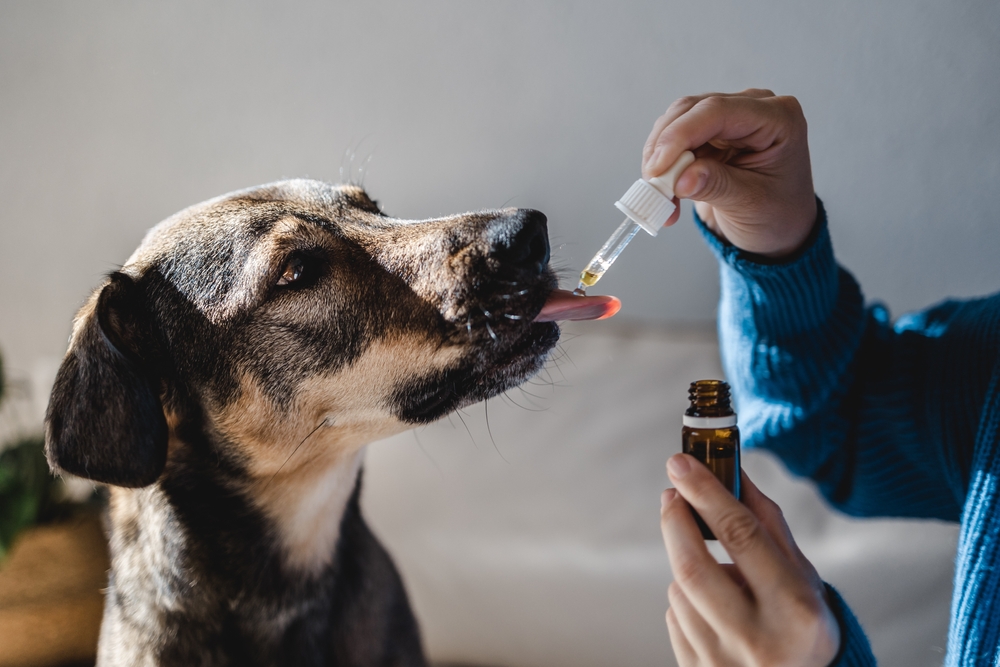
Preventing Excessive Licking
Prevention is often a combination of good hygiene, regular veterinary care, and mental stimulation. Here’s how you can help:
- Maintain Regular Grooming
Brushing removes dirt and allergens from your pet’s coat, preventing irritation. Professional grooming can also address skin conditions that may lead to licking. - Provide Mental and Physical Enrichment
Boredom is a common cause of licking. Engage your pet with interactive toys, daily walks, and play sessions. Puzzle feeders and agility exercises are excellent options. - Monitor Allergies
Stay vigilant about potential allergens in your pet’s environment or diet. Regular check-ups with your vet can identify and address sensitivities early. - Routine Veterinary Care
Regular check-ups help catch and treat potential problems before they become serious. - Create a Stress-Free Environment
Use calming aids like pheromone diffusers or sprays to help pets relax. A predictable routine can also alleviate anxiety.
Supporting You and Your Pet
At Star of Texas Veterinary Hospital, we understand how concerning excessive licking can be. Our team is here to help you uncover the root cause and provide personalized solutions. From advanced diagnostics to tailored treatment plans, we’re committed to improving your pet’s quality of life.
Quick Tips for Pet Owners:
- Keep your pet’s living space clean and allergen-free.
- Use toys and interactive games to redirect their attention.
- Schedule regular veterinary visits to catch early signs of trouble.
Concerned about your pet’s licking habits?
Contact us today via our appointment request and let us help your pet feel better. Together, we can ensure your pet lives a happy, healthy life.

